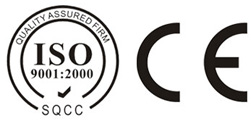Recycled wood is often used as raw material of biomass pellet mill, but it has to be"clean", untreated and free of paint, heavy metals or other harmful additives. Any metal fastenings such as nails or screw s must be entirely removed before putting into biomass pellet mill. In this form, such wood is more often used in biomass pellet plant, the products of which are mainly provide to large co-fired heat and power plants rather than small scale stoves and boilers.
Energy crops from agricultural products-such as straw, hay, miscanthus or fast-growing willow are an increasingly interesting option for biomass pellet mill. Some early experiences with agri-fuels revealed that they burn less well and with more ash deposits than anticipated. This suggests that more product development, particularly in fuel conditioning, is needed before they are more widely available for biomass pellet mill or biomass pellet plant to the public. Even when agri-fuels are fully market-ready, their producer anticipate that the products will be used by large heat and power installations, probably in briquette form, rather than the domestic or public building sectors.
Quality of feedstock is vital for making good pellets. Before pressing in a biomass pellet mill, the woody matter must by rendered into dust or fine granules. This is generally achieved by shredding and pulverizing in a hammer mill. If the feedstock's moisture content is more than 10-12 percent, it will also need drying in the process of biomass pellet plant. Water and sometimes vegetable oil, or starch, are added in a controlled fashion at the pressing stage to improve the consistency of the pellets.
The finite availability of wood co-products, recycled wood and sustainably harvestable trees suggests that sourcing raw materials for biomass pellet mill could become a major issue. If sawdust were to be imported from South America or Russia, where illegal and unsustainable logging is presently rife, such trade would require a very rigorous and transparent certification process to ensure that the source were sustainable.




